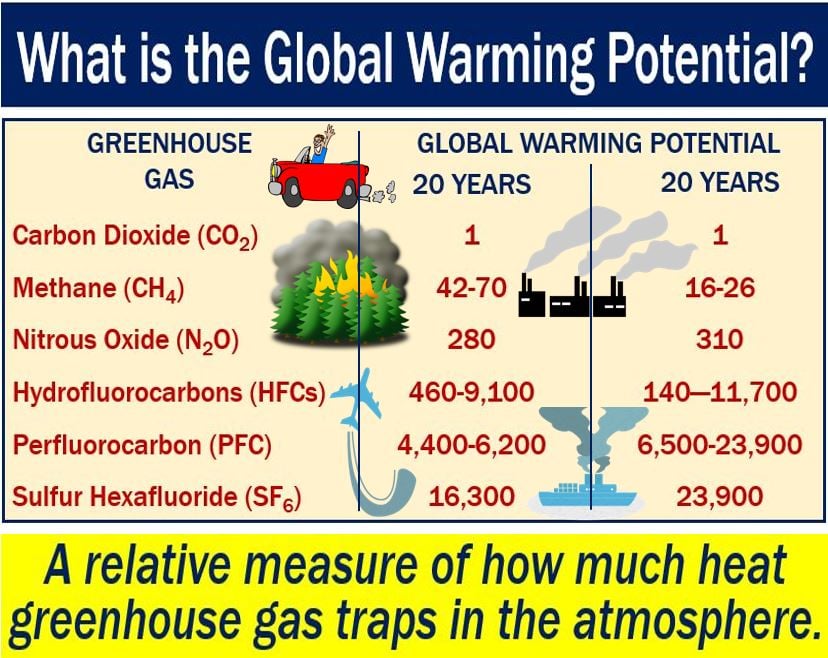The Global Warming Potential or GWP is a measure of how much energy one ton of an atmospheric gas will absorb over a specific period relative to one ton of CO2. CO2 stands for carbon dioxide. Put simply; GWP tells us how much heat a greenhouse gas traps in the atmosphere compared to carbon dioxide.
Scientists developed the Global Warming Potential so that we could compare different greenhouse gases.
A greenhouse gas is a gas in the atmosphere that absorbs and emits radiation within the thermal infrared range. In other words, it keeps the planet’s surface warm.
The greenhouse gasses’ process is the fundamental cause of the greenhouse effect.
Global warming refers to the rising temperatures of our oceans and atmosphere. The majority of scientists today believe that the greenhouse effect is fueling global warming. They also believe that the rising temperatures are the result of human activity.

Understanding the Global Warming Potential
Greenhouse gases or GHGs warm our planet by absorbing energy. They also slow down the rate at which the energy dissipates, i.e., escapes to outer space.
Greenhouse gases act like Earth’s insulating blankets. Not all CHGs have the same effect on the Earth’s warming.
These gases differ from each other in two fundamental ways:
- Their radiative efficiency, i.e., their ability to absorb energy.
- Their lifetimes, i.e., how long they remain in the atmosphere.
When we measure how powerfully each greenhouse gas warms the Earth, we compare it to CO2.
We usually make that comparison over a period of 100 years. However, studies may focus on periods ranging from twenty to five-hundred years.
CO2 has a Global Warming Potential of 1. A gas with a GWP of 10 has ten times the Global Warming Potential of CO2.
By looking at each gas’ GWP, scientists and policymakers can compare emissions reduction strategies across sectors and gases.
Below is a list of some greenhouse gases and their Global Warming Potential. The data below comes from the US Environmental Protection Agency:
- CO2: PWG = 1.
- Methane (CH4): PWG = from 28 to 36.
- Nitrous Oxide (N2O): PWG = from 265 to 298.
- Chlorofluorocarbons (CFCs): their GWPs are in the thousands or tens of thousands. HFCs (hydrofluorocarbons), HCFCs (hydrochlorofluorocarbons), PFCs (perfluorocarbons), and SF6 (sulfur hexafluoride) also have GWPs in the thousands or tens of thousands.
The United Nations Framework Convention on Climate Change has a table on the GWPs of several greenhouse gases. The table also provides details of each gas’ lifetime.
